 |
 |
 |
 |
Life Cycle Asset Management of Uranium Mining and Processing Facilities
IAEA-TECDOC-2084 ¦ English ¦ 188 pages ¦ Date published: 2025
Safe and sustainable uranium production requires comprehensive asset management guidelines, strategies, procedures and planning for uranium mines and processing facilities. This TECDOC offers guidance on management strategies and maintenance techniques for ageing uranium production cycle facilities.
|
Based on industry best practices and international standards, it draws from the expertise and insights of industry professionals to consolidate knowledge on the life cycle asset management of uranium mines and processing facilities. This guidance is applicable to existing, new and ageing uranium production facilities and is intended for use by governmental organizations in Member States, regulatory bodies, and owners and operators of uranium mines and mills.
|
 |
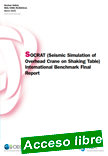 |
SOCRAT (Seismic Simulation of Overhead Crane on Shaking Table) International Benchmark Final Report
OECD/Nuclear Energy Agency ¦ NEA/CSNI/R(2023)11¦ English ¦ 105 pages ¦ Date published: Mar 2025
Bridge cranes, which are components that handle devices designed to lift and transfer heavy loads, are widely used in the nuclear sector. Assessing the dynamic behaviour of bridge cranes is essential for nuclear safety. Indeed, despite favorable seismic experience feedback (EPRI, 2005a; EPRI, 2005b) within the context of seismic level 1 probabilistic safety assessment (PSA) studies, these devices have been identified as significant contributors to the probability of core meltdown in case of failure.
|
Moreover, modelling the mechanical behaviour of such a device under seismic load is a challenging scientific and engineering exercise due to the importance of accounting for nonlinearities such as frictional sliding and local shocks. The behaviour of the anchoring system seems to be one of the possible causes of failure of this component when loading is assumed beyond the design conditions. Consequently, it is necessary to enhance knowledge on the dynamic behaviour of this component to fully understand its response to earthquakes and to assess the efforts transmitted by the crane to the anchors. Within this scope, the SOCRAT (Seismic Simulation of Overhead CRAne on shaking Table) international benchmark, organised by the Institute for Radiological Protection and Nuclear Safety (France’s Institut de radioprotection et de sûreté nucléaire, or IRSN) and Electricity of France (EDF) under the umbrella of the Nuclear Energy Agency (NEA), was launched in June 2020. Its initial objectives were: (i) to identify best modelling practices of bridge crane devices in the beyond design domain; and (ii) to identify relevant failure criteria.
|
 |
 |
Best Practice Guidelines for the Use of CFD in Nuclear Reactor Safety Applications – 2024 Update
OECD/Nuclear Energy Agency ¦ NEA/CSNI/R(2022)10 ¦ English ¦ 170 pages ¦ Date published: 2025
The aim of this second revision of the Best Practice Guidelines (BPG) is to provide guidance to the user of computational fluid dynamics (CFD) codes, both novice and experienced, in the field of nuclear reactor safety (NRS). It gives a complete set of guidelines for a wide range of single-phase applications of CFD to NRS problems.
|
The original document, Best Practice Guidelines for the Use of CFD in Nuclear Reactor Safety Applications [1] has known two successive revisions, one in 2015 [2], and the present report. Changes are summarised in Annex II. Computational fluid dynamics (CFD) codes are scientific computing tools that consider explicitly 3-D geometric features while solving momentum, heat and mass balances through a fluid domain. The use of CFD in the field of nuclear reactor safety (NRS) thermal hydraulics has been identified as the most relevant approach for several issues, for which access to data at a local scale can bring a real benefit. The development of CFD codes is fast evolving and their implication in safety assessment studies has been increasing sharply over the past two decades. The specificities of such tools raise the question of adapted methodologies for those studies.
|
 |
 |
Studies of Temporal Trends of Pollution in Selected Coastal Areas by the Application of Isotopic and Nuclear Techniques: Report of a Coordinated Research Project
IAEA-TECDOC-2070 ¦ English ¦ 224 pages ¦ Date published: 2025
Lead-210 (Pb-210) dating can be used to understand depositional trends of contaminants in the coastal marine environment. Decades of research have been committed to optimizing the use of Pb-210 as an isotopic tool to date sediment layers, yet challenges in its application limit its full potential.
|
This TECDOC uses real case studies from around the world to examine the challenges and assumptions in using the method, the scope of its use, discussion on model usage, and validation. The geographic diversity of the presented studies provides a snapshot of the effect of anthropogenic activities and the resulting organic, inorganic, and radioactive contaminants on our coastal oceans. This publication is intended for environmental scientists and marine managers.
|
 |
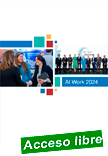 |
World Nuclear Association Annual Report 2024
English ¦ 32 pages ¦ Date published: November 2024
At Work is an annual report of World Nuclear Association's activities. The report provides details of the Association's everyday work and plans for the year ahead. World Nuclear Association is the only organization with a global mandate to promote nuclear energy and represent the companies that constitute the worldwide nuclear industry. Our mission is to enable the growth of the global nuclear sector by connecting companies and individuals across the nuclear value chain, shaping and representing the industry’s position in major world forums, providing authoritative information and influencing key audiences, organizations and media.
|
The 2024 edition presents World Nuclear Association’s activities according to our four key strategic objectives – Connect, Represent, Inform, and Influence. The report also presents our Secretariat, governance and membership.
|
 |
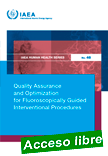 |
Quality Assurance and Optimization for Fluoroscopically Guided Interventional Procedures
IAEA Human Health Series No. 48 ¦ English ¦ STI/PUB/2101 ¦ 173 pages ¦ Date published: 2025
This IAEA Human Health Series publication provides comprehensive guidance on quality assurance and optimization in fluoroscopically guided interventional procedures (FGIPs). Designed for a diverse range of clinical specialists, it emphasizes the critical role of radiology medical physicists in establishing robust quality assurance programmes.
|
By outlining best practices, standardizing protocols and emphasizing the integration of cutting edge technology with evidence based medicine, this publication aims to support healthcare providers in offering FGIPs that are patient-centred and in line with global standards.
|
 |
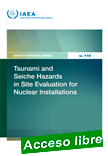 |
Tsunami and Seiche Hazards in Site Evaluation for Nuclear Installations
Safety Reports Series No. 116 ¦ English ¦ STI/PUB/1988 ¦ 193 pages ¦ Date published: 2025
In 2004, the Indian Ocean Tsunami damaged several nuclear installations in India. In 2011, the Great East Japan Earthquake and Tsunami caused the Fukushima Daiichi nuclear accident. These events have focussed international attention on the importance of protecting nuclear facilities against such natural hazards.
|
This IAEA Safety Report presents detailed methodologies and recent case studies for the design and safety assessment of coastal nuclear installations, especially with a view to providing defence in depth. It complements IAEA Safety Standards Series No. SSG-18, Meteorological and Hydrological Hazards in Site Evaluation for Nuclear Installations, published in 2011, by introducing the latest knowledge of tsunami and seiche hazards based on real major events and related data, and their effects on nuclear sites. This publication is designed to be of use for all IAEA Member States that have nuclear installations near their shorelines.
|
 |
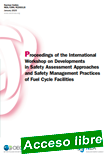 |
Proceedings of the International Workshop on Developments in Safety Assessment Approaches and Safety Management Practices of Fuel Cycle Facilities
OECD/Nuclear Energy Agency ¦ NEA/CSNI/R(2021)5 ¦ English ¦ 207 pages ¦ Date published: 2025
The Working Group on Fuel Cycle Safety (WGFCS), which is part of the Committee on the Safety of Nuclear Installation (CSNI) of the Nuclear Energy Agency (NEA), held an international workshop on developments in safety assessment approaches and safety management practices of fuel cycle facilities.
|
The workshop was hosted by the NEA in co-operation with the French Institute for Radiation Protection and Nuclear Safety (IRSN) as host of the technical visit, at the OECD Conference Centre in Paris, France.The event concentrated on the approaches of different national regulators and licensees in the safety assessment of fuel cycle facilities (FCFs), focusing on the developments and improvements adopted in the last few years before the workshop was held, as well as on international progress in safety assessment methods, including feedback from the oversight practices of FCF operators.
|
 |
 |
IAEA Support to Cameroon for Nuclear Security Measures at the Africa Cup of Nations 2021
IAEA-TDL-012 ¦ English ¦ 36 pages ¦ Date published: 2025
This publication describes the nuclear security measures that were established and implemented to address nuclear security threats at the Africa Cup of Nations 2021 (Cameroon, 9 January to 6 February 2022). It details how the various competent authorities and agencies responsible for nuclear security implemented these measures with the support of the IAEA.
|
It also highlights the technical and administrative requirements for developing the necessary organizational structure, nuclear security plans, strategies and concepts of operation. This publication is intended to be used by State authorities such as law enforcement, customs officials, security services and competent technical organizations, in their efforts to establish and implement nuclear security measures during a major public event.
|
 |
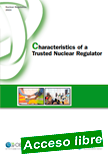 |
Characteristics of a Trusted Nuclear Regulator
OECD/Nuclear Energy Agency ¦ NEA No. 7618 ¦ English ¦ 48 pages ¦ Date published: 2025
This report is intended to serve as a practical guide to explain the organisational characteristics, attributes and ways of thinking that can help a nuclear regulator build and maintain trust with interested stakeholders and the public. It offers examples of actions and activities that can be taken to demonstrate those characteristics in practice.
|
The NEA encourages and challenges all established regulatory bodies to use it as a benchmark so that they continually strive to enhance their effectiveness in fulfilling their mission to protect people and the environment. It aims to be a resource for countries with existing, mature regulators, but can also be used for training and developing staff in newcomer countries currently in the process of developing and maintaining a trusted nuclear safety regulator.
|
 |
| |
|
|

|
|
|
| |
|
|
| |
| |
|
|
| |
| |
|
|
| |
| |
|
|
|
| |
| |
